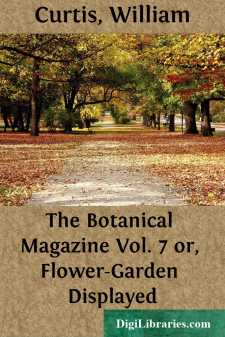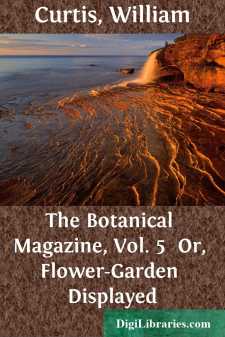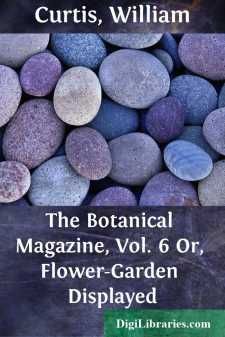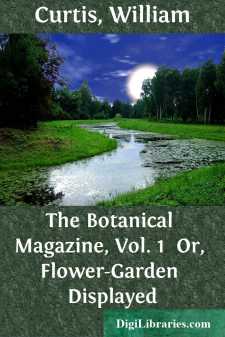Categories
- Antiques & Collectibles 13
- Architecture 36
- Art 48
- Bibles 22
- Biography & Autobiography 813
- Body, Mind & Spirit 142
- Business & Economics 28
- Children's Books 15
- Children's Fiction 12
- Computers 4
- Cooking 94
- Crafts & Hobbies 4
- Drama 346
- Education 46
- Family & Relationships 57
- Fiction 11828
- Games 19
- Gardening 17
- Health & Fitness 34
- History 1377
- House & Home 1
- Humor 147
- Juvenile Fiction 1873
- Juvenile Nonfiction 202
- Language Arts & Disciplines 88
- Law 16
- Literary Collections 686
- Literary Criticism 179
- Mathematics 13
- Medical 41
- Music 40
- Nature 179
- Non-Classifiable 1768
- Performing Arts 7
- Periodicals 1453
- Philosophy 64
- Photography 2
- Poetry 896
- Political Science 203
- Psychology 42
- Reference 154
- Religion 513
- Science 126
- Self-Help 84
- Social Science 81
- Sports & Recreation 34
- Study Aids 3
- Technology & Engineering 59
- Transportation 23
- Travel 463
- True Crime 29
The Botanical Magazine, Vol. 2 or Flower-Garden Displayed
by: William Curtis
Categories:
Description:
Excerpt
[37]
Chironia frutescens. Shrubby Chironia.
Class and Order.
Pentandria Monogynia.
Generic Character.
Cor. rotata. Pistillum declinatum. Stamina tubo corollæ infidentia. Antheræ demum spirales. Peric. 2-loculare.
Specific Character and Synonyms.
CHIRONIA frutescens, foliis lanceolatis subtomentosis, calycibus campanulatis. Lin. Syst. Vegetab. p. 229.
CENTAURIUM foliis binis oppositis angustis linearibus, flore magno rubente. Burm. Afric. 205. t. 74. fig. 1.
N37
Of the genus Chironia, ten species are enumerated in Prof. Murray's last edition of the Syst. Vegetab. of Linnæus, exclusive of the Chironia Centaurium which we first added to this genus in the 42d number of the Flora Londinensis.
Of these, the frutescens is the most shewy, and therefore the most cultivated.
It is a native of different parts of Africa.
The flowers are produced from June to autumn, and the seeds ripen in October. This plant should be placed in an airy glass case in winter, where it may enjoy a dry air, and much sun, but will not thrive in a warm stove, nor can it be well preserved in a common greenhouse, because a damp moist air will soon cause it to rot.
The seed of this plant should be sown in small pots filled with light sandy earth, and plunged into a moderate hot-bed; sometimes the seeds will lie a long time in the ground; so that if the plants do not appear the same season, the pots should not be disturbed, but preserved in shelter till the following spring, and then plunged into a fresh hot-bed, which will bring up the plants in a short time if the seeds are good. When the plants are fit to remove, they should be transplanted into small pots, four or five in each pot, then plunged into a moderate hot-bed, where they must have a large share of air in warm weather; when they have obtained some strength, they must be gradually inured to the open air; when exposed abroad, they should be mixed with such plants as require little water, placed in a warm situation, and screened from heavy rains, which are apt to rot them. The cuttings of this sort take root if properly managed. Miller's Gard. Dict.
Viburnum Tinus. Common Laurustinus.
Class and Order.
Pentandria Trigynia.
Generic Character.
Calyx 5-partitus, superus. Cor. 5-fida. Bacca 1-sperma.
Specific Character and Synonyms.
VIBURNUM Tinus foliis integerrimis ovatis: ramificationibus venarum subtus villoso-glandulosis. Lin. Syst. Vegetab. p. 294.
LAURUS sylvestris, corni fæminæ foliis subhirsutis. Bauh. Pin. 461.
The wild Bay-tree. Park. Parad. p. 400.
N38
We scarcely recollect a plant whose blossoms are so hardy as those of the Laurustinus, they brave the inclemency of our winters, and are not destroyed but in very severe seasons.
The beauties of this most charming shrub can be enjoyed by those only who cultivate it at some little distance from town, the smoke of London being highly detrimental to its growth.
It is a native of Portugal, Spain, and Italy.
Botanists enumerate many varieties of the Laurustinus, and so considerably do some of these differ, that Miller has been induced to make two species of them, which he distinguishes by the names of Virburnum Tinus and V. lucidum; the last of these is the most ornamental, and at the same time the most tender; there are some other trifling varieties, besides those, with variegated leaves, or the gold and silver-striped.
It is only in very favourable situations that these shrubs ripen their seeds in England, hence they are most commonly propagated by layers, which readily strike root: Miller says, that the plants raised from seeds are hardier than those produced from layers....









